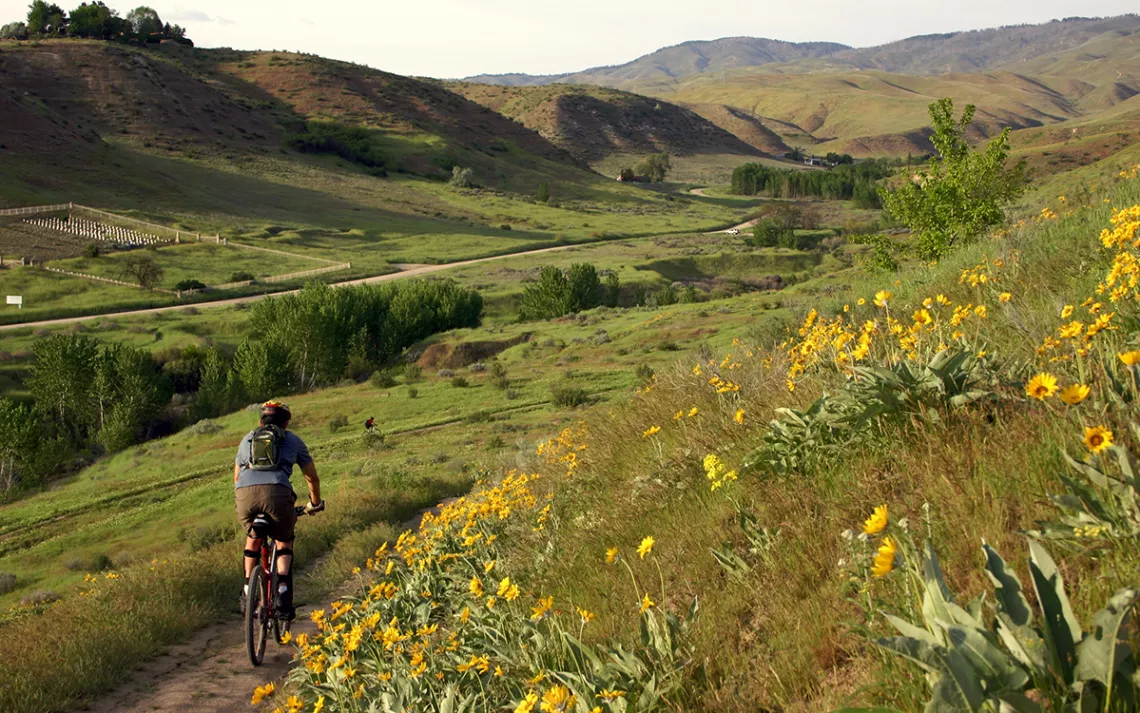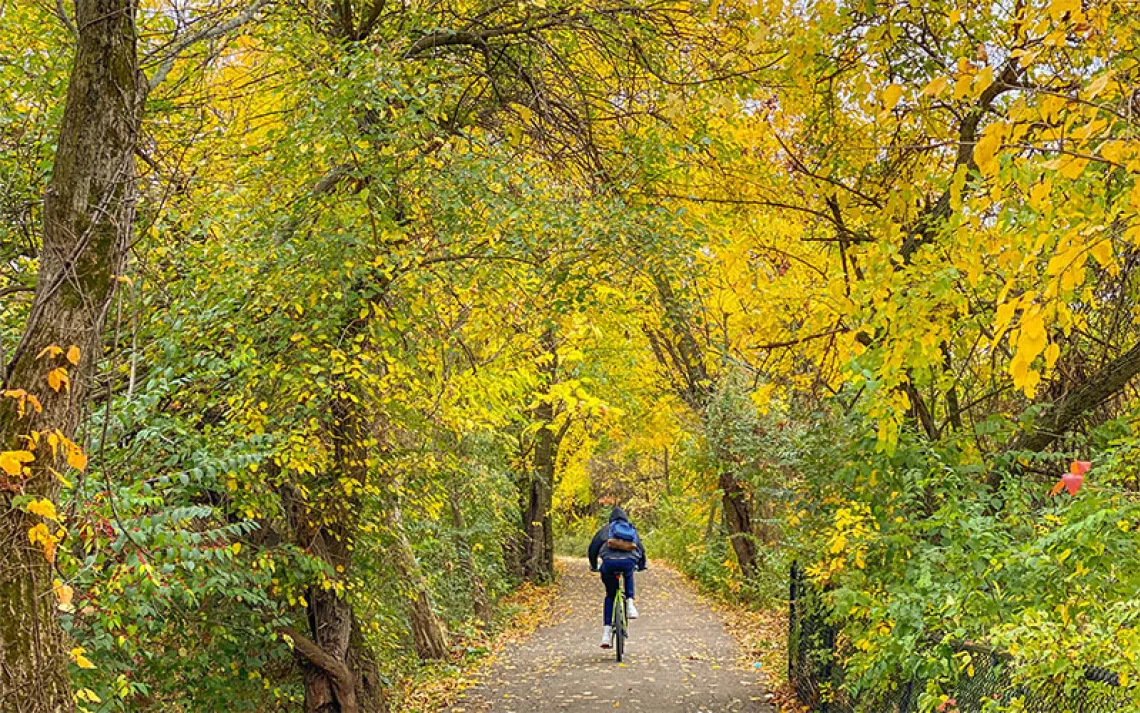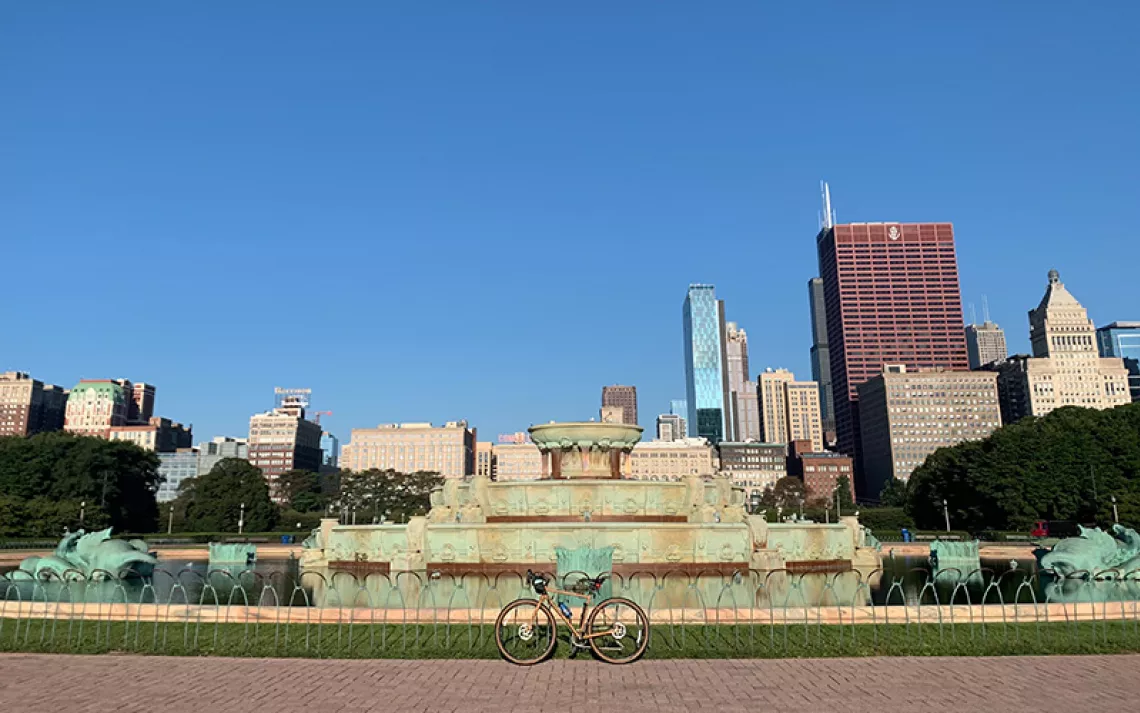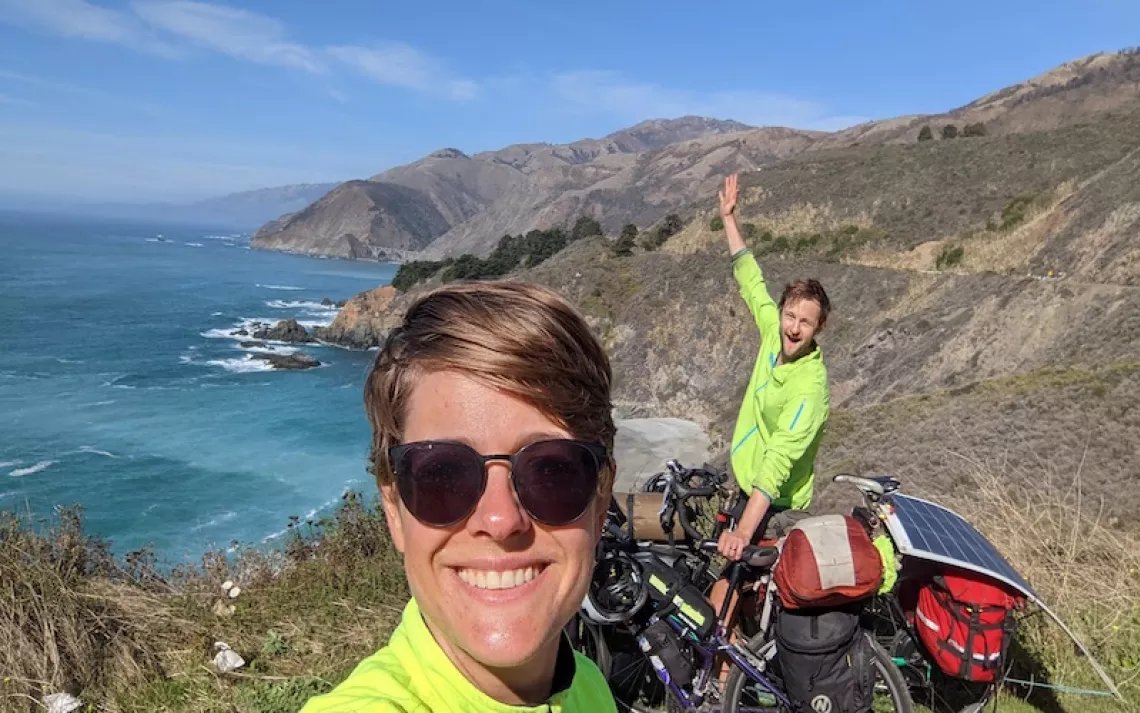Shredding as a Path to Community Development
Boom times for mountain biking means towns are investing in cycling trails

Photo by christiannafzger/iStock
Among the many unanticipated side effects of the COVID-19 pandemic has been an enormous boom in bicycle sales. This happens just as cities and regions across North America are designing and building local and long-distance trails for cycling, hiking, and other forms of nonmotorized recreation as a means of community development. Long-standing mountain bike meccas like Moab, Utah, and Sedona, Arizona, demonstrated the potential of trail-based tourism; now other areas are catching on.
A raft of recent studies have shown the positive impacts—economic and otherwise—of nonmotorized trails. For example, each dollar spent building, maintaining, and using cycling trails is estimated to yield nearly $3 in savings on health-care costs due to improved fitness in users. Compared with unauthorized trails, carefully designed networks of engineered mountain bike trails reduce conflicts between riders and land managers on both public and private lands, as well as minimizing erosion, habitat degradation, and other environmental impacts. Trails can also be the centerpieces of urban renewal: A survey of residents in Squamish, British Columbia, showed that the town’s mountain bike trails were an “important” to “very important” lifestyle lure for more than 80 percent of local respondents. Another study by the mountain biking website Pinkbike.com suggested that off-road cyclists are willing to spend as much and travel as far as golfers and other tourists to pursue their passions.
Today’s new breed of trail towns can be lumped into certain categories. Some integrate outdoor recreation with environmental reclamation in an effort to pivot regional economies away from the boom-and-bust cycles of extractive industries. Other municipalities invest in trails to attract new residents or retain old ones. And some communities are networking with others to create outdoor-adventure destinations that span broader geographies. Here are a few notable examples of each.
Reclamation
The rugged landscape that once supported Chisholm, Minnesota’s iron ore mines has been rehabilitated into a brand-new, 23-mile network of mountain bike trails. Located in northern Minnesota’s Mesabi Range, Redhead Mountain Bike Park spans over 1,200 acres of regenerating forest, interspersed with redrock outcrops and the austere, gaping maws of former mine pits. Cyclists and hikers can access the trails for free from the Minnesota Discovery Center.
In Athens County, Ohio, a local cycling club worked with Wayne National Forest to develop 26 miles of trails in the reclaimed woods of the industrial heartland for cycling, hiking, and birding. A project nearly 30 years in the making, the Baileys Trail System will eventually include 88 miles of paths in the Appalachian foothills of a former coal-mining district in southeastern Ohio. The mountain bike and hiking trails were designed to intersect with city bike paths in three communities and with a paved regional cycling trail to provide easy access to rehabilitating wildlands with hardwood forests, creeks, and natural caves.
Investment
Bentonville, Arkansas, has emerged as the “mountain bike capital of the world” largely thanks to massive investments by Walmart heirs Tom and Steuart Walton. The Walton Family Foundation has dumped $74 million into building over 160 miles of paved and off-road cycling trails in Arkansas, part of a larger urban renewal effort. Besides world-class trails, Bentonville has offered incentives (like a $600 voucher to purchase a mountain bike from a local shop) for outdoor enthusiasts to relocate to the Ozarks. Northwestern Arkansas provides powerful evidence of the potential of bike tourism: cycling brought $137 million of economic benefits to the region in 2017 alone.
Elsewhere, the Waltons have opened up a private landholding in Redstone, Colorado, with 4.5 miles of purpose-built mountain bike trails, including a flowy downhill that will open this spring. Also in Colorado, the 32-mile Palisade Plunge is an epic gravity-enabled mountain bike ride starting at the 10,719-foot summit of Grand Mesa and ending in the downtown core of Palisade. The trail, which also opens this year, will rank among the longest downhill single-tracks in the United States.
Networking
The remote northern hamlet of Copper Harbor, Michigan (population 85), attracts over 20,000 visitors per year for its expertly crafted single-track mountain bike trails on the rocky spine of Lake Superior’s Keweenaw Peninsula. Copper Harbor’s 39 miles of trails are part of what's becoming one of the best cycling-focused road trips in North America. Other bike-crazy towns on the 1,000-mile Lake Superior circle tour include Duluth, Minnesota; Thunder Bay, Ontario; Sault Ste. Marie, Ontario; and Marquette, Michigan. Once the international border reopens for travel, cyclists can anticipate a weeklong road trip punctuated by the cliffs, forested hills, and endless beaches of the world’s largest freshwater lake.
Also in the Midwest, southern Michigan’s 275-mile Great Lake-to-Lake Trail stretches from the shore of Lake Michigan at South Haven to Port Huron on Lake Huron. The dirt and paved route is suitable for gravel and touring bikes and passes through more than 75 small towns, with plenty of options for accommodations and meals. Amtrak service between the trailheads makes it easy to handle the logistics for a long-distance journey.
Designed as a “luxury bikepacking experience,” the Aquarius Trail Hut System spans 190 miles across southern Utah’s Color Country, with a blend of single-track and rough roads linking five backcountry huts (reclaimed shipping containers with solar power, kitchens, and bathrooms) for overnight stays. The route links existing trails at Brian Head (elevation 11,307 feet), Parker Reservoir, and the Red Canyon Bike Path, passing through Grand Staircase–Escalante National Monument to finish at 5,820 feet in the town of Escalante.
Clearly, there’s great potential for cycling trails to redefine the economic and social fabric of communities. But it’s just as important to remember that the benefits go beyond the tourism economy: Thoughtfully designed trails in accessible locations can restore and protect environmental values and make it easier for all residents to benefit from time in nature. To that end, California representative Jimmy Gomez and New Jersey senator Cory Booker have reintroduced the Transit to Trails Act, which would provide transportation funding for underserved communities to make sure the trails are open to all.
 The Magazine of The Sierra Club
The Magazine of The Sierra Club



